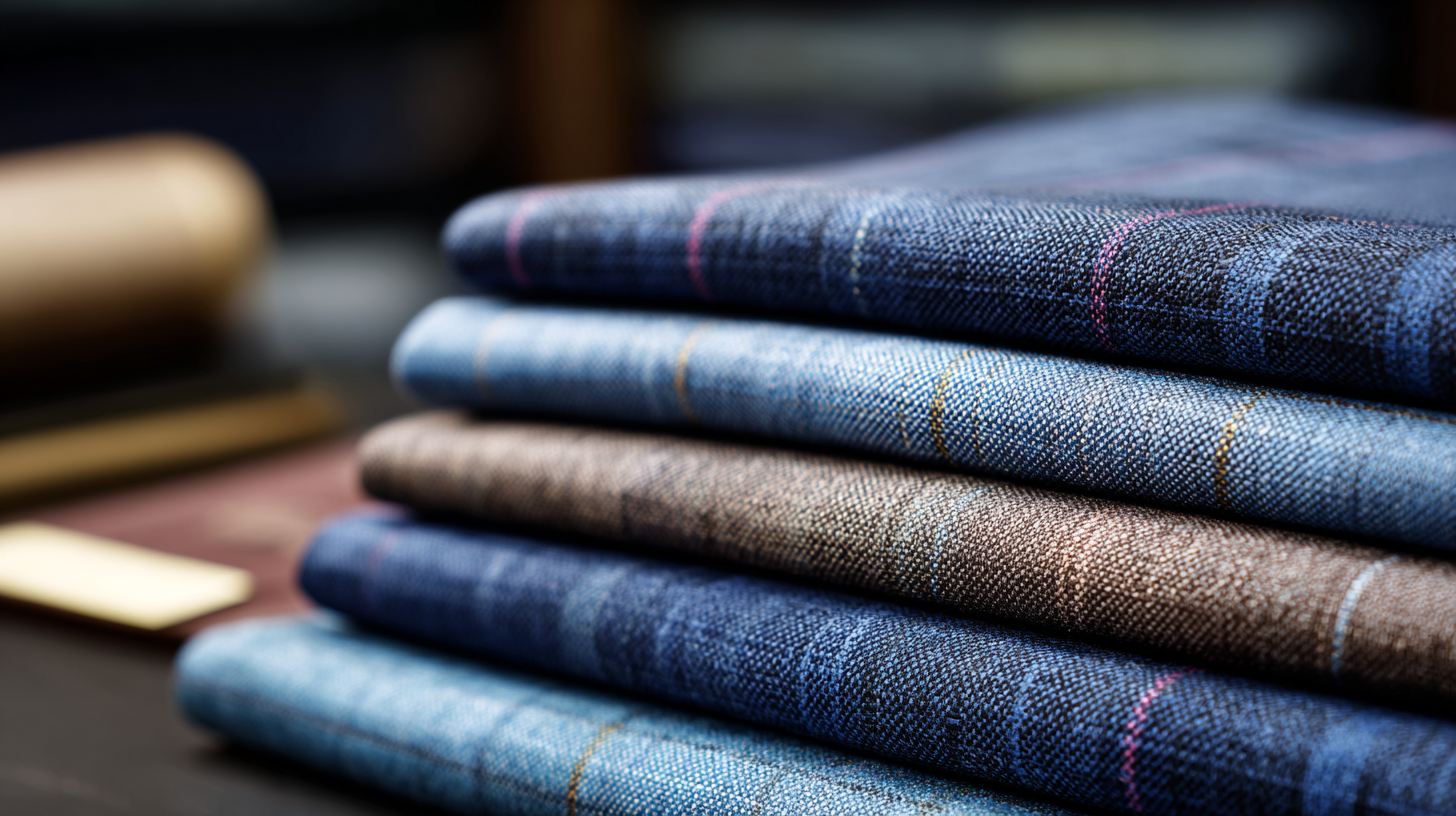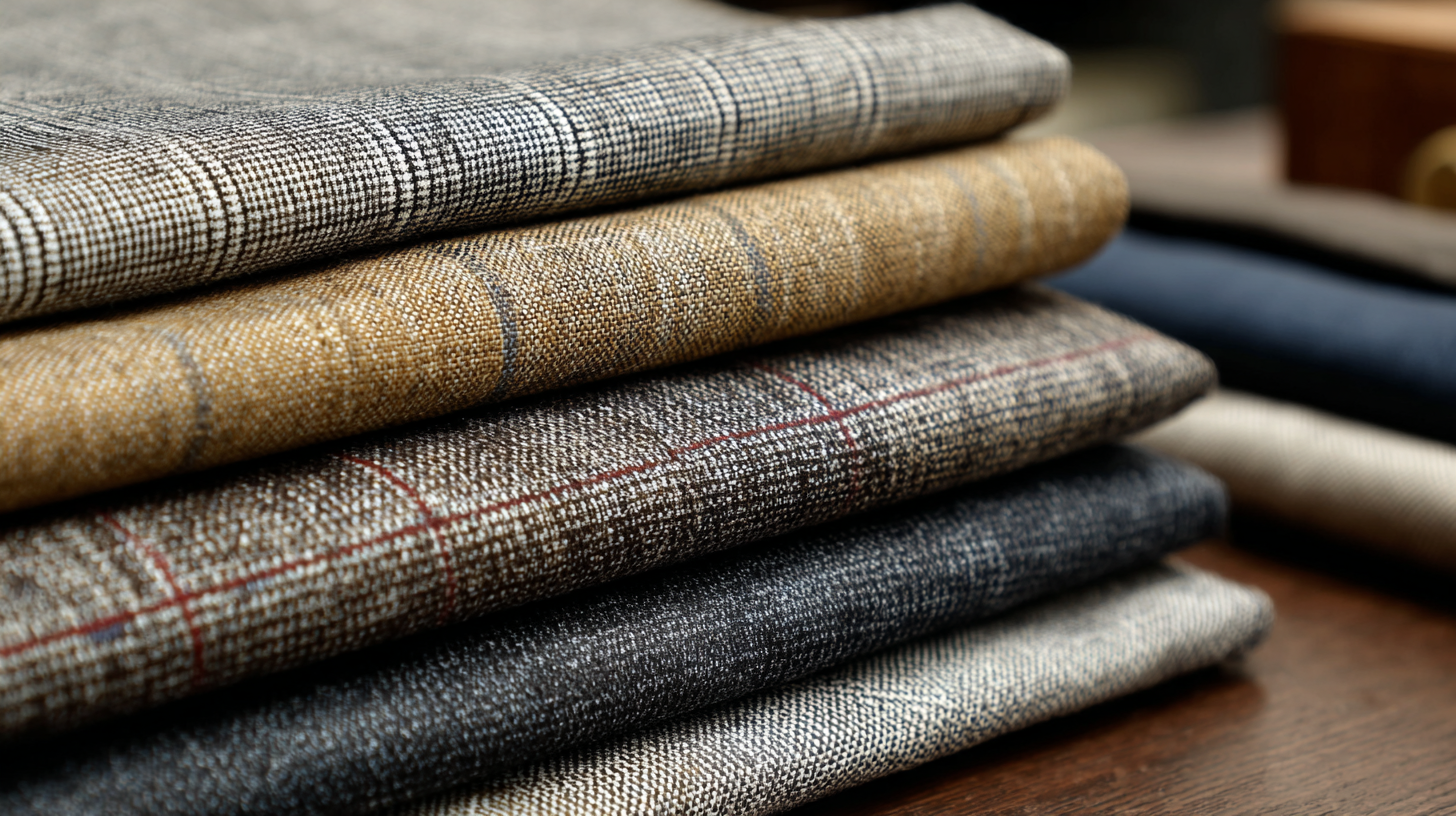In today's fast-paced fashion landscape, the demand for versatility and comfort in men's tailoring has reached unprecedented levels. According to a recent report by the Global Fashion Industry, the market for tailored menswear is projected to grow by over 5% annually, highlighting a shifting preference towards modern silhouettes. A key player in this evolving trend is the choice of Thin Suit Fabric, which not only enhances breathability but also allows for greater freedom of movement without sacrificing elegance. The combination of lightweight materials and contemporary designs paves the way for suits that resonate with the dynamism of modern life. By unlocking the potential of the best Thin Suit Fabric, consumers can experience a harmonious blend of style and functionality that meets the demands of both formal and casual settings.

When it comes to modern tailoring, the fabric selection is paramount, particularly for thin suits that cater to the contemporary aesthetic. High-quality fabrics not only enhance the overall look and feel of the suit but also ensure longevity and comfort. According to a report by the Fashion Institute of Technology, suits made from premium fabrics can increase wear time by approximately 30%, indicating that investing in quality materials pays off in the long run.
Furthermore, thin suits experience unique challenges in terms of drape and structure. The right fabric helps maintain a sharp silhouette while ensuring breathability, which is essential for all-day wear in various conditions. Research from the Textile Institute reveals that lightweight wool blends are preferred for their moisture-wicking properties, leading to increased comfort in warmer climates. By prioritizing high-quality fabrics, tailors can craft suits that not only look impressive but also provide the practicality and comfort demanded by today's discerning clientele.
This chart illustrates the importance of selecting high-quality fabrics for modern tailored thin suits. The data reflects the preference of individuals based on durability, breathability, and overall comfort.
When selecting the ideal thin suit fabric for modern tailoring, certain key characteristics come into play that can dramatically enhance both style and comfort. A fine balance between weight and breathability is essential; lightweight materials like cotton, linen, and innovative blends allow for ease of movement and optimal airflow. This is particularly important for warm climates or summer occasions, where a suit needs to look sharp without sacrificing comfort.
Another critical characteristic is the fabric's drape and structure. Fabrics that possess a natural fall will create a sleek silhouette, allowing for a tailored fit that complements the wearer’s body shape. Additionally, fabrics like lightweight wool and high-quality synthetic blends add sophistication while maintaining flexibility. This ensures that modern suits not only fit well but also retain their shape throughout the day, making them perfect for dynamic lifestyles. With the right thin suit fabric, individuals can achieve a look that is both elegantly sophisticated and effortlessly comfortable.
When selecting the ideal fabric for thin suits, understanding the options available is crucial for achieving the perfect blend of style and functionality. Wool boasts exceptional versatility, with reports indicating it regulates temperature well, making it suitable for both warm and cool climates. Lightweight merino wool, in particular, has gained popularity; its breathability and moisture-wicking properties are essential for modern tailoring, allowing wearers to remain comfortable throughout the day.
However, linen offers an alternative worth considering, especially for casual or summer suits. Its natural fibers provide superior breathability and a relaxed aesthetic, though it may wrinkle more easily. According to the Fabric Warehouse 2023 Report, linen suits are preferred for warm-weather events, confirming their growing trend in formal and semi-formal attire. Choosing a linen blend can also combine the best of both worlds—resilience and comfort.
**Tip**: When selecting a fabric, prioritize the suit’s intended use. For business settings, lightweight wool is usually recommended, while linen works best for outdoor summer gatherings.
**Tip**: Always check the fabric’s weight; a lighter option (around 240-280 grams per meter) will enhance mobility without compromising on structure, crucial for a tailored fit.
| Fabric Type | Weight (g/m²) | Breathability | Durability | Suitability for Thin Suits |
|---|---|---|---|---|
| Wool | 200 | High | Very Durable | Excellent |
| Cotton | 160 | Moderate | Moderately Durable | Good |
| Linen | 150 | Very High | Less Durable | Very Good |
| Polyester | 180 | Moderate | Very Durable | Good |
| Silk | 120 | High | Less Durable | Excellent |
When it comes to modern tailoring, the fit and feel of a thin suit can significantly impact both comfort and style. Utilizing advanced tailoring techniques is essential for enhancing the silhouette and wearability of these lightweight fabrics. One such technique is a carefully crafted shoulder structure. By incorporating shoulder pads or using a natural shoulder seam, tailors can create a more defined and elegant look that prevents the suit from appearing limp or overly casual.
Another vital aspect is the precision in cutting and draping the fabric. Tailors should aim for a clean and fluid cut that aligns well with the suit's contours. Techniques such as canvas stitching and hand-sewn details elevate the overall structure, ensuring the suit maintains its shape while allowing for natural movement. Additionally, investing in proper linings and interlinings can enhance breathability and comfort, making thin suits ideal for warmer climates. These meticulous adjustments not only improve the fit but also elevate the style, showcasing the craftsmanship behind tailored garments.

Caring for your thin suit is essential to maintaining its longevity and style. The right fabric, such as lightweight wool or high-quality polyester blends, not only offers superior breathability but also durability. According to a report from the Textile Research Journal, garments made from high-performance fabrics can last 1.5 to 2 times longer than those made from standard materials. This underscores the importance of selecting the best thin suit fabric for modern tailoring, as a well-chosen suit will remain looking sharp longer.

Tip 1: Always read the care label for your thin suit. Many modern materials can be machine-washed, but delicate fabrics may require dry cleaning. Adhering to these guidelines can preserve the suit's color and finish, providing a polished look for years to come.
Tip 2: Store your suit properly. Use a breathable garment bag to protect it from dust and potential damage. Avoid hanging it on wooden or curved hangers; instead, opt for padded hangers that maintain the shoulder structure and prevent creasing. According to a study by the Clothing and Textiles Research Journal, proper storage can elongate a garment's lifespan by up to 60%.